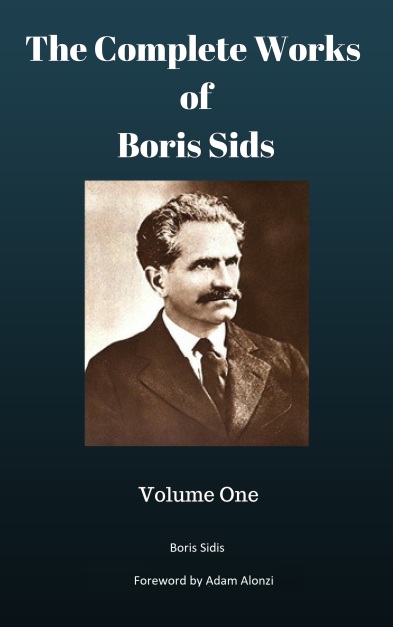Originally published on Radical Science News
Authors: Lydia Fucsko and Adam Alonzi

Green Tree Frogs (Litoria caerulea) on bananas ©Lydia Fucsko
Amphibian derives from the Greek words ‘amphi’ (double) and ‘bios’ (life) – and their unique life cycles have made them icons of the environmental movement. Frogs have become symbolic of biodiversity conservation and environmental water management.
Although there are a plethora of amphibians and water sources, the conventional image is of a frog in a pond. In this peaceful place adult frogs sit on branches and leaves, dragonflies hover overhead, and tadpoles wriggle below the surface. Aside from this conventional image, amphibians have a long tradition of mythology that extends into popular culture, advertising, and even web animations.
The common need for water creates a close kinship between humans and these remarkable organisms. Almost anyone can appreciate amphibians, at the very least, for their astonishing diversity (ARAZPA 2008; Attenborough 2008). It is hardly surprising Kermit the Frog has leapt into human popular culture given the character’s universal appeal (Tyler, Wassersug & Smith 2007).
Frogs and toads, as members of the class Amphibia, are commonly referred to as amphibians. Frogs and toads are different than caecilians and salamanders because they do not have a tail after reaching adulthood. Frogs and toads belong to the order Anura, which translates to “no tail.” Further distinctions between frogs and toads are widespread and generally understood, however, “From a taxonomic perspective, all members of the order Anura are frogs, but only members of the family Bufonidae are considered ‘true toads.’ The use of the term ‘frog’ in common names usually refers to species that are aquatic or semi-aquatic with smooth and/or moist skins, and the term “toad” generally refers to species that tend to be terrestrial with dry, warty or bumpy skin.” Frogs and toads are found on every continent except Antarctica. As of April 2015, there are 6,482 species in the Anura order according to the American Museum of Natural History (AMNH).

Tadpoles, tadpoles, tadpoles!
It is well-known frogs begin their lives as small fish-like creatures called tadpoles. Tadpoles, like their mature counterparts, vary in size and morphology. At this stage they are usually herbivorous, but have been known to prey upon zooplankton, insect larvae, and even other tadpoles (Altig et al, 2007).
Frogs are eaten in many countries, including Peru, India, China and France. They were also considered delicacies by the ancient Romans. In fact, frogs are so prized in certain culinary circles that a number of Asian countries have forbidden their exportation. Although particularly popular in France and China, they are also consumed on the Iberian Peninsula, in Southeast Asia, and parts of the Balkans. It’s true what they say: (some) frogs taste like chicken. Typically their meat is bland and requires frying or hot sauce. Others taste fishy to discerning palates. This should not be surprising, since amphibians are not far removed from the first creatures to climb out of the Devonian sea. By piecing together the puzzle of the geographic distribution of amphibians using DNA sequence data, academics offer further insights into how amphibians crossed vast continents over time.
Frogs have continued to serve as sources of haute cuisine and new drugs (Adler, 2003; Grenard 1994; Tyler 1997). Throughout the ages frogs and toads have been used in innumerable medicines and magical rituals (Sax 2001, p. 125). Misconceptions about frogs still abound and many superstitions are still believed wholeheartedly. Do they give us warts? Empirical evidence reveals this is not so (Tyler & Looby 2004, pp. 68-69). They even gave us the first human pregnancy test and have helped us better understand mitosis and meiosis.

The Waxy Monkey Tree Frogs
They offer a treasure trove of pharmaceuticals to help humans to combat disease: ways to numb pain, treat ulcers, and improve the organ transplantation process, among many others. Peptides like dermaseptins and magainins in the skin extracts of the waxy monkey treefrog (Phyllomedusa sauvagei) and the African clawed frog (Xenopus laevis) hold promise. Amphibians are proving to be powerful allies in research against STI-causing pathogens. Such peptides may prove to provide safer microbicides and spermicides. Microbicides are more convenient to use in the form of gels, films, or suppositories, and capable of neutralizing viruses and bacteria. Researchers have also identified a peptide with the potential to accelerate wound-healing on the skin of Graham’s frog (Odorrana grahami). Secretions from many Australian tree frogs contain antimicrobial peptides that form part of the host defence mechanism to ward off bacterial infection.
The size of the African clawed frog’s (X. laevis) eggs allows researchers to see and manipulate them easily. They can study the effects of injecting drugs or DNA into the egg.  The cells divide rapidly and many ingenious ways of halting, restarting, and modifying the cell cycle have been developed. Their tadpoles are transparent, which is yet another blessing to developmental biologists because it lets them see how tissues and organs are formed. This species can survive for up to twenty years, the entire time furnishing researchers with useful information. The 18th century biologist Lazzaro Spallanzani proved sexual reproduction can only take place through the joining of male and female gametes by putting rubber pants on frogs! It is often claimed frogs will allow themselves to be boiled to death if the temperature of water is raised gradually enough, but this is disputed by Douglas Melton, a Harvard biology professor: “If you put a frog in boiling water, it won’t jump out. It will die. If you put it in cold water, it will jump before it gets hot—they don’t sit still for you.”
The cells divide rapidly and many ingenious ways of halting, restarting, and modifying the cell cycle have been developed. Their tadpoles are transparent, which is yet another blessing to developmental biologists because it lets them see how tissues and organs are formed. This species can survive for up to twenty years, the entire time furnishing researchers with useful information. The 18th century biologist Lazzaro Spallanzani proved sexual reproduction can only take place through the joining of male and female gametes by putting rubber pants on frogs! It is often claimed frogs will allow themselves to be boiled to death if the temperature of water is raised gradually enough, but this is disputed by Douglas Melton, a Harvard biology professor: “If you put a frog in boiling water, it won’t jump out. It will die. If you put it in cold water, it will jump before it gets hot—they don’t sit still for you.”

The Mink Frog
As ingredients in numerous folk remedies and sources of cutting-edge pharmaceuticals, frogs have long played a role in medical research. The Russian brown frog Rana temporaria, for instance, is dipped into milk to prevent souring. In China powdered toad venom acts much like digitalis in strengthening heart contractions. Tribes in South America have used frog secretions as venom for their arrows and as ointments for their wounds.
Most infections attack the mucous membranes. Since a frog’s epidermis is essentially one large mucous membrane one may wonder why they do not turn into “bags of pus.” Although their skin houses a wealth of antifungal, antiviral, and antibacterial agents, it is not especially adept at fighting off certain types of fungi. The mink frog of North America (Rana septentrionalis) can combat the dreaded “Iraqibacter”, a drug resistant bacterium that has infected wounded American soldiers in Iraq.
The foothill yellow-legged frog (Rana boylii) shows promise in fighting methicillin-resistant Staphylococcus aureus (MRSA) bacteria, however this species is now facing extinction. Bear in mind many of these compounds are large peptides which, at this time, do not make the best pharmaceuticals. They can elicit immune responses and are often metabolized too quickly. However, as delivery methods become more sophisticated, this may no longer be an issue.
Two small peptides isolated from the waxy monkey frog (P. sauvagii) show antiangiogenic properties. By stopping the formation of blood vessels they could be useful in killing tumours. The giant fire-bellied toad (Bombina maxima) has a peptide that does the opposite. Encouraging angiogenesis could be a boon to stroke victims, organ transplant recipients, and patients with certain types of cardiovascular disease. Samples were collected from two groups of frog species: Litoria, which includes the Australian green tree frog, and Crinia, a genus also native to Australia. Litoria produce caerin peptides, which attack cell membranes. Members of Crinia make riparins, which can enhance immune response, regulate blood pressure, and relax tense muscles. Some frogs are also veritable alkaloid factories, a family of molecules that contains recognizable names like caffeine, morphine, psilocybin, and nicotine. Epibatadine is a toxin derived from the Equadorian poison tree frog (Epipedobates tricolor) with analgesic properties.
While it will not supplant opiates in the near future, it may serve as the inspiration for new and less addictive types of painkillers.

Poison Dart Frogs: they pose a greater immediate threat to you and you to them.
Frogs breathe with their lungs and through their skin to regulate moisture and fluid transfer (Australian Government Department of the Environment and Heritage 2004, p. 1). Humans should not haphazardly handle an amphibian out of regard for its safety. Unless it is a poison dart frog (Dendrobatidae), and you immediately place your fingers into your mouth or near your eyes after contact, you likely pose a greater threat to the little creatures than they ever will to you. Having semi-permeable membranes makes them vulnerable to dehydration and to whatever toxins or harmful microbes someone may be harboring on their hands. A guide to properly handling amphibians can be found here. Every so often a frog deformed by pollution makes its way into the news. This is a result of exposure to harmful chemicals during critical windows of development or to pathogens that have sprung up as a result of ecological imbalances. These unfortunate mutants should serve as sobering illustrations of what the irresponsible disposal of teratogens can do to living things.
As sensitive indicators of changes in their habitat, the health of amphibians is related directly to, and a telling reflection of, disease and dis-ease in the environment. “If chemicals in the water cause mutations and reproductive problems in frogs think of what they could be doing to humans,” states Vicky Poole of the National Aquarium in Baltimore. We can “help save frogs and other amphibians” by limiting the use of chemicals and pesticides which ultimately end up in the watershed and ultimately harm frog populations.
Maleficent, beloved, educative, beneficent, or endangered, frogs and toads have been seen in different lights at different times. These many different roles suit an animal that spends part of its life in the water and a portion on land, time in one body and time in another. They come in a dizzying array of shapes, sizes, and colors. More than just bulging eyed fly catchers, frogs and toads have a diverse assortment of mating rituals, child rearing methods, lifestyles, life cycles, and defences against predators. Frost et al. (2006) note there are estimates of well over 5,200 frog species and there are likely many more to be discovered. Tragically, it is estimated that over 120 amphibian species have become extinct since 1980 (Moore, 2014).
Amphibians, once reviled and perpetually promoted as symbols of doom in literature, are now harbingers not only of spring, but of a burgeoning global shift in consciousness. Conserving these creatures is seen as not only noble, but also in humanity’s best interest – the outdated belief that an ecological crisis was mere hearsay has been put to rest now global warming is widely accepted by the scientific and the political communities around the world (McKibben, 2006; Flannery, 2015).
Frogs are used in scientific testing. Most iconically they were used in the past by institutions of learning to teach anatomy, physiology, and pharmacology. In the twenty first century there has been a global outcry against such practices and mounting concern about the health of our water resources. There is a growing awareness about the absence of those creatures that traditionally dwelt in, on, or near waterways—the problem is apparent when an eerie silence falls upon places once bustling with croaks, calls, and songs.
Amphibians have sophisticated nervous systems that allow them to feel pain and pleasure like any other sufficiently advanced animal. The central nervous system of a frog is composed of the front, mid, and hind brains. The hind, which contains the medulla oblongata, keeps the frog balanced. The frontal and mid areas manage sensory inputs. Its peripheral nervous system is composed of ten pairs of cranial nerves, as opposed to twelve in humans, as well as their extensions that allow for the exchange of information between the brain and the rest of the body. For over half a century we have gathered ample evidence that clearly shows nonhuman animals feel pain and experience many other emotions once believed to be unique to Homo sapiens (Balcombe 2010; Bekoff 2007, 2010; Bekoff et al. 2002; Bekoff & Pierce 2009; Fouts & Mills 1997; Griffin 1992). Thus, it should be clear that it is inhumane to intentionally injure or cause them distress.
Humans have long been mesmerised by the metamorphosis amphibians undergo, and have sought insights into human physiology by observing it. Tyler, Wassersug & Smith (2007, p. 2) note that, “This is not surprising as frogs and humans share similar organ systems and biological needs” (Holmes 1993; Nussbaum and Oksenberg Rorty 1995). There are similarities and differences between mammalian and amphibian physiology. Frogs have a brain, two eyes, two ears, a mouth, and a nose, but have no ribs, only nine vertebrate, and no tail. However, a urostyle, a downward extension of the spinal column, is a tail-like relic from the evolutionary past.
Whereas humans have two lower leg bones, the tibia and a fibula, nature’s great hoppers have only one. Amphibians do not have ears on the outside like mammals, but they can hear. Their ears are composed of a cartilage ring that vibrates which then tickles the fluid, which moves tiny “hairs”, which stimulate the nerves. This is all fine and good, but what is more unusual is the fact a frog’s lungs are almost as sensitive to vibration as their ears. Professor Peter Narins (2006) discovered the two are connected by an airway. This is analogous to the way fish can “hear” with their air bladders.
In many locales croaking is synonymous with a midsummer night’s eve. The size of the tympanum, the circular ear cover, is one way to distinguish between the genders. In males it is smaller than their eyes, in females it is approximately the same size. Although for many species emitting a call is critical to attracting a mate, it is just as important that females can hear it! As in most animals, sexual dimorphism exists. When breeding commences the male employs his specialized call to attract females. The male will attempt to climb on top of the female’s back and clasp around her “waist” in what is referred to as amplexus, and the eggs are generally fertilized in the water as she lays them. The male is typically smaller in order not to crush the future mother of his children; the female is larger to store her many eggs. There is great diversity in the world of courtship and reproduction where frogs are concerned.
More than one Nobel Prize has been won with the help of our gracious little friends. The Ig Nobel Prize was awarded to Andre Geim for his frog levitation project. In his defence, he later snatched a Nobel for his work on graphene, making him the one man to have the honour of winning both awards. In 1962 John B. Gurdon proved the reversibility of cell specialization by replacing the nucleus of an egg cell with one taken from an adult. The resulting chimera developed into a normal tadpole. This led to a shared Nobel Prize with Shinya Yamanaka 50 years later. In the 1700’s Luigi Galvani made a seminal contribution to neurology when he passed a current through the legs of a dead frog. The twitching it induced proved the nervous system had an electrical foundation. These experiments made him famous and would later inspire Mary Shelley to write one of the most famous horror novels in the Western canon.
In the Middle Ages amphibians were associated with a sundry of diseases and evils. These superstitions and prejudices did not readily die. Wells (2007) cites the eminent eighteenth century Scandinavian biologist Carolus Linnaeus, who, in 1758, wrote in Systema Naturae (The System of Nature) that, ‘These foul and loathsome animals…are abhorrent because of their cold body, pale colour, cartilaginous skeleton, filthy skin, fierce aspect, calculating eye, offensive smell, harsh voice, squalid habitation, and terrible venom….’
Such a misguided statement may well have been indicative of a general fear felt by the public towards these animals which was further compounded by the hysteria surrounding the alleged practice of witchcraft. The Catholic Church decided frogs were one of the forms familiars could assume, familiars in this case refers to malevolent entities who carry out a witch’s commandments. From that point onward amphibians became synonymous with witchcraft in the West.
Loved or maligned, kissed by princesses or boiled by witches (Cooper 1992, p. 107; Ribuoli & Robbiani 1991, pp. 38-47), amphibians have long enchanted us and continue to appear in folklore, children’s stories, magic and mythology, and popular culture (Heiner 2010).
Ribuoli and Robbiani reinforce this presence when they mention frogs feature ‘so prominently throughout history, the world over, in legend… art and popular entertainment’ (1991, p. 6). From Exodus to Aesop, Aristophanes, Jim Henson’s most famous Muppet, and the Egyptian goddess of fertility, frogs have played important roles in the mythologies and cultures of the world. Heqet, the Egyptian frog deity, was depicted simply as a frog, or a woman with a frog’s head or, less commonly, as a frog perched upon a phallus. With the annual flooding of the Nile came millions of frogs. It is no wonder Heqet amulets were worn by women who wanted children.
An enduring fable attributed to Aesop concerning a croaking assemblage of frogs provides a timeless moral. In The Frogs Who Desired a King a community of pond dwellers prayed to Zeus for a monarch to rule over them. Zeus, always ready to teach terrible lessons, first made a humble log their ruler. Discontent with a mere figurehead, the serfs petitioned the thunder god for a more fearsome king. Always willing to grant a wish when its outcome is destructive, Zeus sent them a stork that greedily gobbled them up.
In many mythologies amphibians have been inexorably connected to and associated with the primeval waters from which life emerged. For the Huron Indians and other Native Americans, the deliverer of rain is a frog (Sax 2013, p. 292). The aborigines of Queensland, Australia have a well-known legend that a frog once swallowed all of the waters on the land. Here is one version of The Story of Tiddalik.
Jin Chan, literally means “Golden Toad.” Legend has it Jin was the rapacious wife of one of the Eight Immortals who was punished for stealing one of the peaches of immortality by  being turned into a toad. According to Feng Shui beliefs, Jin Chan, also known as the “Money Toad” or “Money Frog”, is a charm strategically placed in homes and places of business to increase good fortune.
being turned into a toad. According to Feng Shui beliefs, Jin Chan, also known as the “Money Toad” or “Money Frog”, is a charm strategically placed in homes and places of business to increase good fortune.
These life forms, which figure so prominently in so many stories and mythologies, are often symbols of prosperity. Today they are profitable commodities for pet traders, but are suffering as a result of being taken from their homes in such large numbers. Many die during transport and those that arrive, as one would expect, are never returned to their habitats. Additionally, the unregulated trading of amphibians has spread many infectious diseases, including the potentially lethal Chytrid fungus (Batrachochytrium dendrobatidis), which was identified in 1998.
Amphibians are a critical link in the food chain. Frogs and toads are carnivores that happily gulp down any living thing they can fit into their mouths Depending on their size, they will prey upon flies, mosquitoes, and other flying annoyances. Larger types will eat worms, grasshoppers, bugs, spiders, worms, larvae, slugs, baby turtles, mice, small fish, snakes, and even other frogs. Besides removing pests, they also serve as an indispensable food source for fish, birds, reptiles, mammals, and even arthropods.
As mentioned earlier, for many years amphibians have been used as a way of assessing the health of water bodies. The overuse of pesticides, herbicides, and fungicides, as well as industrial runoff can result in failed metamorphosis, immunosuppression, hermaphroditism, disease, and death.
The pesticide atrazine feminizes male frogs and glyphosate causes growth abnormalities in tadpoles. The hydrological cycle ensures the widespread and sometimes unpredictable dispersal of pollutants. This means the carelessness of one country or city can harm the wildlife of another thousands of miles away. Climate change hits frogs, toads, and their kin especially hard. Their eggs lack the protective shells of birds and reptiles. This makes them susceptible to drying out. Adult frogs, needing to maintain moisture, are always vulnerable to desiccation. Even desert dwelling amphibians depend on the periodic formation of puddles. Mating can be affected by temperature and the availability of water.
Other frogs find themselves accidental tourists in an inhospitable—or overly hospitable—land. Sometimes given the epithet “Banana Box”, they are transported across great tracts of land or sea in crates of fruit, vegetables, or plants. Hidden from view these displaced travellers may carry diseases like the deadly Chytrid fungus (Chytridiomycosis) which presents a serious threat to native species. For this reason frogs must never be released into the wild unless special approval is granted.
Environmental issues are a central topic for debate. Global summits to save frog species are increasing in number and relevance. The Year of the Frog in 2008 with Sir David Attenborough presenting as patron, proved successful in raising awareness of their plight.
The ARAZPA 2008 Year of the Frog Campaign Information pack is available here:
The latest assessment by the International Union for the Conservation of Nature (IUCN), the world’s leading authority on the conservation status of different species, Red List of Threatened Species (update 2015) shows that at a minimum 41% of all extant amphibian species face risk of extinction. Their threatened status is alarming given that so many of them have already left our company for the oblivion of extinction (Walther et al. 2002). Mass extinctions and serious population declines have been observed over the last quarter century (Lips et al. 2006; Pounds et al. 2006; Stuart et al. 2004).
Although there is increasing evidence there are several factors behind these demographic changes (Johnson 2006), the part humans play in this process is obvious in the form of habitat destruction. Global warming is implicated, however, this environmental crisis cannot be remedied with a single approach.
Habitat destruction displaces animals of all kinds. The purposeful or accidental introduction of invasive species has also taken its toll on native populations around the world. The cane toad was brought to Australia to keep pests under control. Unfortunately, it drove many other amphibians to extinction. Historically black and brown rats, notorious carriers of pestilence, had a negative impact on formerly isolated populations of frogs. Now chytridiomycosis affects one third of all amphibian species, causing further extinctions (Rooji et al. 2015). In 2006, researchers suspected that African frogs used as pregnancy tests may be actually spreading the deadly amphibian Chytrid fungus around the world. It is clear alternative treatments need to be developed if biodiversity is to be preserved.
For the sake of our ecosystems and the preservation of animals that have given so much to humankind, we ought to make their protection a priority as soon as possible.
Warshall reminds us that, ‘Humans lose water constantly-we are not water tight-and we need to replenish ourselves or die. This is a ‘hydro-contract’, an inescapable biospheric life support that we need to work with to maintain ‘hydro-harmonies’ ‘ (2002, pp. 42-43). Still, to this day, the human conception of water is mostly as an abstract resource. Because of this the vital connection we ought to feel with water has been lost. Benefits to the human race must continue to be demonstrated from frog conservation efforts, showing how our fates and theirs are inextricably interwoven. This could influence politicians and the general public to take further steps to protect endangered species and their habitats (Tyler 2007, pp. 1-18).
Why should we help amphibians? It may be suggested this question arises precisely because we have irretrievably lost a measure of our humanity by remaining indifferent to the extinction of so many species worldwide that we have become divorced from our essential compassion. Why shouldn’t we help them?
REFERENCES
Adler, K 2003, ‘Amphibians and humans’, in M Hutchins, WE Duellman, N Schlager (eds), Grzimek’s animal life encyclopaedia, volume 6: Amphibians, Gale Group, Farmington Hills, MI, pp. 51-55.
Altig, R, Whiles, MR & Taylor, CL 2007, ‘What do tadpoles really eat? Assessing the trophic status of an understudied and imperilled group of consumers in freshwater habitats’, Freshwater Biology, vol. 52, pp. 386-395.
ARAZPA (Australasian Regional Association of Zoological Parks and Aquaria) 2008, ‘Year of the Frog’ campaign pack, Madman Printing, viewed 10 July 2015, <http://www.amphibianark.org/pdf/YOTF/ARAZPA%20YOTF%20InfoPack.pdf>.
Attenborough, D 2008, Life in cold blood, Princeton University Press, NJ.
Australian Government Department of the Environment and Heritage 2004, Frogs of Australia fact sheet: Threatened species and communities, National Heritage Trust, Canberra, ACT.
Bekoff, M 2007, The emotional lives of animals: A leading scientist explores animal joy, sorrow and empathy – and why they matter, New World Library, Novato, CA.
Balcombe, J 2010, Second nature: The inner lives of animals, Palgrave Macmillan, New York.
Bekoff, M 2010, The Animal Manifesto: Six reasons for expanding our compassionate footprint, New World Library, Novato, CA.
Bekoff, M & Pierce, J 2009, Wild Justice: The moral lives of animals, University of Chicago Press, Chicago.
Cauble, K, and Wagner, RS 2005, ‘Sublethal effects of the herbicide glyphosate on amphibian metamorphosis and development’, Bulletin of Environmental Contamination and Toxicology, vol. 75, no. 3, pp. 429-435.
Clarke, BT 1997, ‘The natural history of amphibian skin secretions, their normal functioning and potential medical applications’, Biological Reviews of the Cambridge Philosophical Society, vol. 72, no. 3, pp. 365-379.
Cooper, JC 1992, Symbolic and mythological animals, Aquarian Press, London.
Goel, PK 2006, Water pollution: causes, effects and control. India, New Age International.
Flannery, T 2006, The weather makers: How man is changing the climate and what it means for life on earth, Grove Press, New York.
Flannery, T 2015, Atmosphere of hope: Searching for solutions to the climate crisis, Text Publishing.
Fouts, R & Mills, ST 1997, Next of kin: My conversations with chimpanzees, Avon Books, New York.
Frost, DR, Grant, T, Faivovich, J, Bain, RH, Haas, A, Haddad, CFB, De Sa, RO, Channing, A, Wilkinson, M, Donnellan, SC, Raxworthy, CJ, Campbell, JA, Blotto, BL, Moler, P, Drewes, RC, Nussbaum, RA, Lynch, JD, Green, DM, and Wheeler, WC 2006 ‘The amphibian tree of life’ Bulletin of the American Museum of Natural History, vol. 297, pp. 1-370.
Gehman, JD, Luc, F, Hall, K, Lee, TH, Boland, MP, Pukala, TL, & Separovic, F 2008, ‘Effect of Antimicrobial Peptides from Australian Tree Frogs on Anionic Phospholipid Membranes’, Biochemistry, vol. 47, no. 33, pp. 8557-8565.
Griffin, D 1992, Animal minds, University of Chicago Press, Chicago.
Grenard, S 1994, Medical Herpetology, N.G. Publishing Company, Pottsville.
Hayes, TB, Khoury, V, Narayan, A, Nazir, M, Park, A, Brown, T, Adame, L, Chan, E, Buchholz, D, Stueve, T, and Gallipeau, S 2010, Atrazine induces complete feminization and chemical castration in male African clawed frogs (Xenopus laevis). Proceedings of the National Academy of Sciences, vol. 107, no. 10, pp. 4612-4617.
Heiner, HA (ed.) 2010, The Frog Prince and other frog tales from around the world: Fairy tales, fables and folklore about frogs, Surlalune Press, Nashville, TN.
Holmes, FL 1993, ‘The old martyr of science: The frog in experimental physiology’, Journal of the History of Biology, vol. 26, no. 2, pp. 311-328.
Liu, H, Duan, Z, Tang, J, Lv, Q, Rong, M, & Lai, R 2014, ‘A short peptide from frog skin accelerates diabetic wound healing’, FEBS Journal, vol. 281, no 20, pp. 4633-4643.
Johnson, PTJ 2006, ‘Amphibian diversity: decimation by disease’, Proceedings of the National Academy of Science, vol. 103, no. 9, pp. 3011-3012.
IUCN 2015. The IUCN Red List of Threatened Species. Version 2015-4. <http://www.iucnredlist.org>. Downloaded on 11 March 2016.
Lips KR, Brem, F, Brenes, R, Reeve, JD, Alford, RA, Voyles, J, Carey, C, Livo, L, Pessier, A & Collins, JP 2006, ‘Emerging infectious disease and the loss of biodiversity in a Neotropical amphibian community’, Proceedings of the National Academy of Science, vol. 103, no. 9, pp. 3165-3170.
McKibben, B 2006, The end of nature. Random House, New York.
Moore, R 2014, In Search of Lost Frogs: The Quest to Find the World’s Rarest Amphibians Bloomsbury: London.
Narins, Peter, Albert S. Feng, and Richard R. Fay, eds. 2006, ‘Hearing and sound communication in amphibians’, Springer Handbook of Auditory Research Springer, vol. 28 of the series, pp 1-11.
Nussbaum, MC & Oksenberg Rorty, A 1995, Essays on Aristotle’s De Anima, Oxford University Press, Oxford.
Pounds, JA, Bustamante, MR, Coloma, LA, Consuegra, JA, Fogden, MPL, Foster, PN, La Marca, E, Masters, KL, Merino-Viteri, A, Puschendorf, R, Ron, SR, Sánchez-Azofeifa, GA, Still, CJ & Young, BE 2006, ‘Widespread amphibian extinctions from epidemic disease driven by global warming’, Nature, vol. 439, no. 7073, pp. 161-167.
Pukala, TL, Bowie, JH, Maselli, VM, Musgrave, IF, & Tyler, MJ 2006, Host-defence peptides from the glandular secretions of amphibians: structure and activity’, Natural product reports, vol. 23, no. 3, pp. 368-393.
Ribuoli, P & Robbiani, M 1991, Frogs: Art, legend, history, Bullfinch Press/ Little Brown, New York.
Sax, B 2001, The mythical zoo: An encyclopedia of animals in world myth, legend, and literature, ABC-CLIO, Santa Barbara, CA.
Sax B, 2013, The Mythical Zoo: Animals in Myth, Legend, and Literature 2 ed. Overlook Duckworth Press, New York and London.
Stuart, SN, Chanson, JS, Cox, NA, Young, BE, Rodrigues, ASL, Fischman, DL & Waller, RW 2004, ‘Status and trends of amphibian declines and extinctions worldwide’, Science, vol. 306, pp. 1783- 1786.
Tyler, MJ 1997, ‘The exploitation of frogs: past, present and future’, Australian Biology, vol. 10, no. 1, pp. 65-69.
Tyler, MJ & Looby, M 2004, It’s true! Frogs are cannibals, Allen & Unwin, East Melbourne.
Tyler, MJ, Wassersug, R & Smith, B 2007, ‘How frogs and humans interact: Influences beyond habitat destruction epidemics and global warming’, Applied Herpetology, vol. 4, no. 1, pp. 1-18.
Van Rooij, P, Martel, A, Haesebrouck, F, and Pasmans, F 2015, ‘Amphibian chytridiomycosis: a review with focus on fungus-host interactions’, Veterinary Research, vol. 46, pp. 1-22.
Walther, GR, Post, E, Convey, P, Menzel, A, Parmesan, C, Beebee, TJC, Fromentin, JM, Hoegh-Guldberg, O & Bairlein F 2002, ‘Ecological responses to recent climate change’, Nature, vol. 416, no. 6879, pp. 389–395.
Warshall, P 2002, ‘Watershed governance’, in D Rothenburg & M Ulvaeus (eds), Writing on water, The MIT Press, Cambridge, Mass, pp. 40-57.
Wells, KD 2007, The Ecology and Behavior of Amphibians, The University of Chicago Press, Ltd., London, p.1.
Zairi, A, Tangy, F, Bouassida, K, & Hani, K 2009, Dermaseptins and magainins: antimicrobial peptides from frogs’ skin—new sources for a promising spermicides microbicides—a mini review. BioMed Research International.
Biography:
Lydia Fucsko’s PhD research with scientists highlights worldwide amphibian declines and reflects her passion for environmental activism. She is a member of the Education and Sustainability Board of The Lifeboat Foundation: Safeguarding Humanity. https://lifeboat.com/ex/bios.lydia.fucsko Lydia also holds a Masters Degree in Counselling with other additional degrees. For further general queries, or collaboration on conservation and science education initiatives: Lydia@lydiafucsko.com
Biography:
Adam Alonzi is a writer, biotechnologist, documentary maker, futurist, inventor, programmer, and author of the novels “A Plank in Reason” and “Praying for Death: Mocking the Apocalypse”. He is an analyst for the Millennium Project, the Head Media Director of BioViva Sciences, and Editor-in-Chief of Radical Science News. Listen to his podcasts here. Read his blog here.












 The cells divide rapidly and many ingenious ways of halting, restarting, and modifying the cell cycle have been developed. Their tadpoles are transparent, which is yet another blessing to developmental biologists because it lets them see how tissues and organs are formed. This species can survive for up to twenty years, the entire time furnishing researchers with useful information. The 18th century biologist Lazzaro Spallanzani proved sexual reproduction can only take place through the joining of male and female gametes by putting rubber pants on
The cells divide rapidly and many ingenious ways of halting, restarting, and modifying the cell cycle have been developed. Their tadpoles are transparent, which is yet another blessing to developmental biologists because it lets them see how tissues and organs are formed. This species can survive for up to twenty years, the entire time furnishing researchers with useful information. The 18th century biologist Lazzaro Spallanzani proved sexual reproduction can only take place through the joining of male and female gametes by putting rubber pants on 




 being turned into a toad. According to Feng Shui beliefs, Jin Chan, also known as the “Money Toad” or “Money Frog”, is a charm strategically placed in homes and places of business to increase good fortune.
being turned into a toad. According to Feng Shui beliefs, Jin Chan, also known as the “Money Toad” or “Money Frog”, is a charm strategically placed in homes and places of business to increase good fortune.